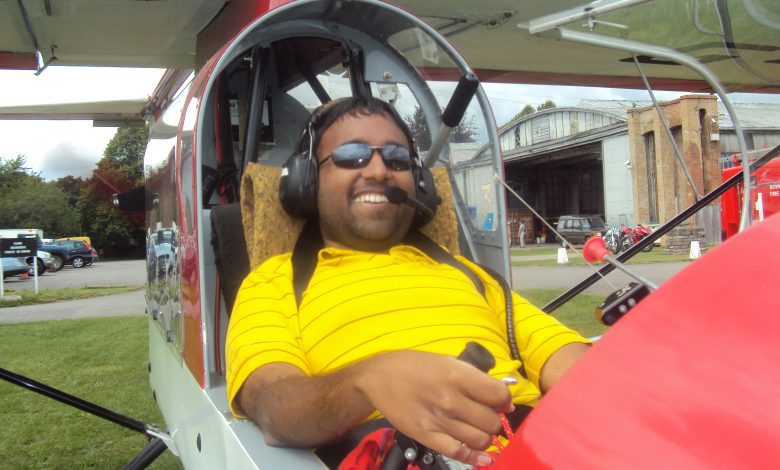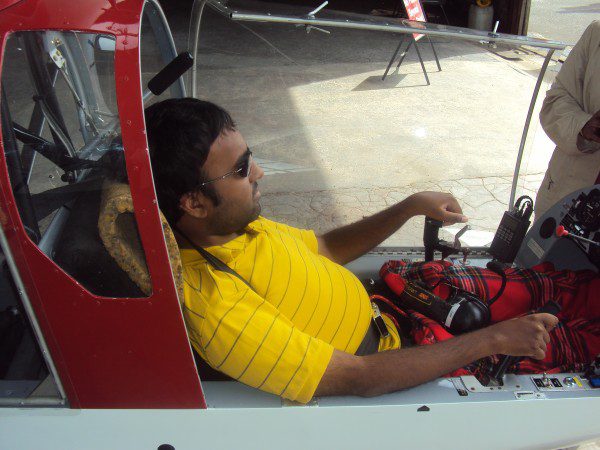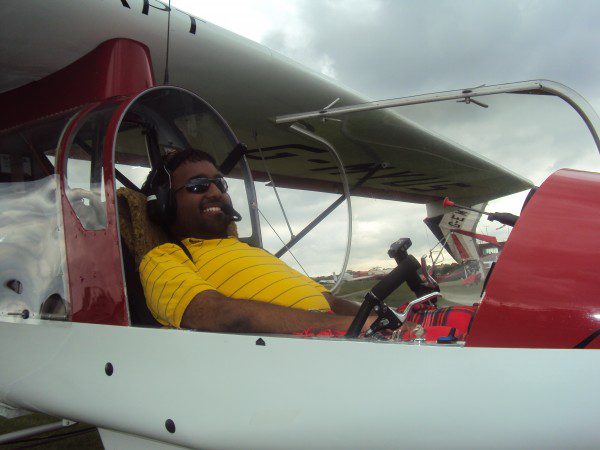
Call sign – “Maverick”: Introducing adaptive flying
Ever wanted to fly a plane? Then let us introduce you to the APT Trust (Aviation for Paraplegics and Tetraplegics Charitable Trust), who open up the world of flying to people with disabilities with their specially adapted aircraft in Salisbury, UK.
APT was founded as charity in 1994 by James Edmonds with the objective of providing facilities and aircraft to teach physically disabled people to fly. James was a pilot himself and wondered how he ever fly he were injured and unable to use the conventional controls of an aircraft. APT was born soon after using two specially adapted Shadow Microlight aircraft.
The Shadow was the chosen aircraft as it most easily allowed a person with a disability to be transferred into the cockpit. It could also accommodate a modified rudder that could be operated with hands only. The final addition was the lifting hoist, which allowed disabled pilots to transfer into the cockpit without the need for any manual handling.
The day to day running of APT is in the hands of Ray Proost and Fiona Luckhurst. Ray is the experienced pilot who takes budding disabled pilots into the skies in the Shadow Microlight. To date, hundreds of disabled people with a variety of disabilities have had flying lessons, and eleven disabled individuals have actually completed their pilot’s licence with APT.
In August, following my co-editor Martyn’s flight last year, I decided to do the same and booked a flight lesson. The experience was extraordinary. I met Ray at Old Sarum Airfield near Salisbury, UK on one of the few days this summer we seemed to have a bit of sunshine.
Ray took me to the Shadow that parked in the hangar and adjusted the seat to my size to ensure that I was comfortable and had sufficient leg room. The hoist picked me up from my chair and lowered me into the cockpit, where I was then strapped in. My hands were placed on the controls, and where I was able to double check that I had just enough strength to be able to move the controls.
Once I was ready, Ray jumped into the main pilot’s seat behind me and carried out his pre-flight checks. We taxied to the runway, and took off into the skies. My objective for this lesson would be try and keep the wings level. Before that though, Ray took the aircraft up to the correct height and ensured I was comfortable with the plane banking or varying altitude.
I found the process of banking to one side a lot of fun, and the sensation of encountering the G-forces when sharply decreasing in altitude was simply exhilarating. The next highlight was flying over the ancient monument of Stonehenge. It was amazing to have seen it from above.
For the remainder of the flight, Ray periodically handed the controls to me, where I was required to keep the wings level and the altitude steady. This might sound easy, but the natural turbulence of air around the aircraft meant that minor adjustments and corrections using the flight controls were constantly needed to keep the aircraft steady, needing much concentration on my part!
As the end of the lesson approached, Ray took back control of the aircraft and we headed back to the airport and Ray carried out a smooth and perfect landing. We finally taxied back to hanger and was hoisted out the plane and back into my wheelchair. Mission accomplished!
I had a great day at the airfield and flying the plane is an experience I will never forget. I cannot recommend enough to anyone reading this article to have a go themselves. Regardless of whether you have any long term intentions of obtaining a pilot’s licence, the thrill of flying a plane in a beautiful part of England is simply just a great day out!
By Srin Madipalli
For more information on the APT, visit their website by clicking here.



